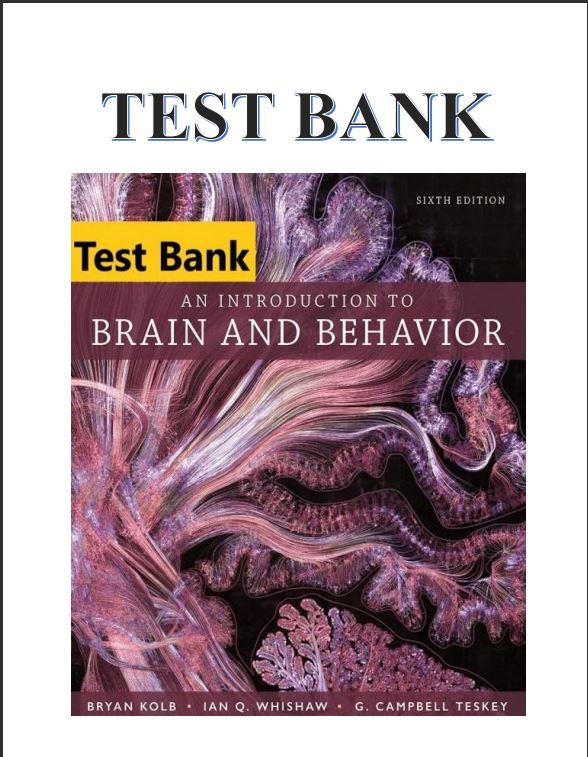An Introduction to Brain and Behavior 6th Bryan Kolb , Ian Q. Whishaw , G. Campbell Teskey Test Bank
An Introduction to Brain and Behavior 6th Bryan Kolb , Ian Q. Whishaw , G. Campbell Teskey Test Bank
Couldn't load pickup availability
Chapter 1 – What are the origins of Brain and Behaviour?
1. Brain abnormalities can be related to:
A) 500 disorders.
B) 1000 disorders.
C) 1500 disorders.
D) more than 2,000 disorders.
2. All the nerve processes radiating out beyond the brain and spinal cord as well as all the
neurons outside the brain and spinal cord constitute the:
A) nervous system.
B) central nervous system.
C) peripheral nervous system.
D) external nervous system.
3. Which is NOT part of the peripheral nervous system?
A) sensory receptors in the skin
B) connections to motor neurons
C) sensory and motor connections to internal organs (e.g., the stomach)
D) the spinal cord
4. The set of brain structures responsible for most of our unconscious behaviors is called:
A) the cerebral hemisphere.
B) the brainstem.
C) the cerebrum.
D) the cerebellum.
5. The postulation that we make subliminal movements of our larynx and muscles when
we imagine was expounded by:
A) D. O. Hebb.
B) Edmond Jacobson.
C) Irenäus Eibl-Eibesfeldt.
Page 1
D) Fred Linge.
6. “Behavior consists of patterns in time” is a definition of behavior expounded by:
A) D. O. Hebb.
B) Edmond Jacobson.
C) Irenäus Eibl-Eibesfeldt.
D) Fred Linge.
7. Patterns in time can be made up of:
A) movements.
B) thinking.
C) both movements and thinking.
D) neither movements nor thinking.
8. Animals with smaller brains and simpler nervous systems have mostly _____ behaviors,
whereas animals with larger brains and more complex nervous systems have mostly
_____ behaviors.
A) learned; inherited
B) inherited; learned
C) innate; inherited
D) learned; innate
9. Crossbill birds have a beak that is designed to eat pine cones. If we trim the beak, the
behavior disappears. This example illustrates:
A) fixed behavior.
B) flexible behavior.
C) learned behavior.
D) adaptive behavior.
10. The sucking response observed in newborn human infants is an example of a(n):
A) learned response.
Page 2
B) inherited response.
C) flexible response.
D) adaptive response
Share

